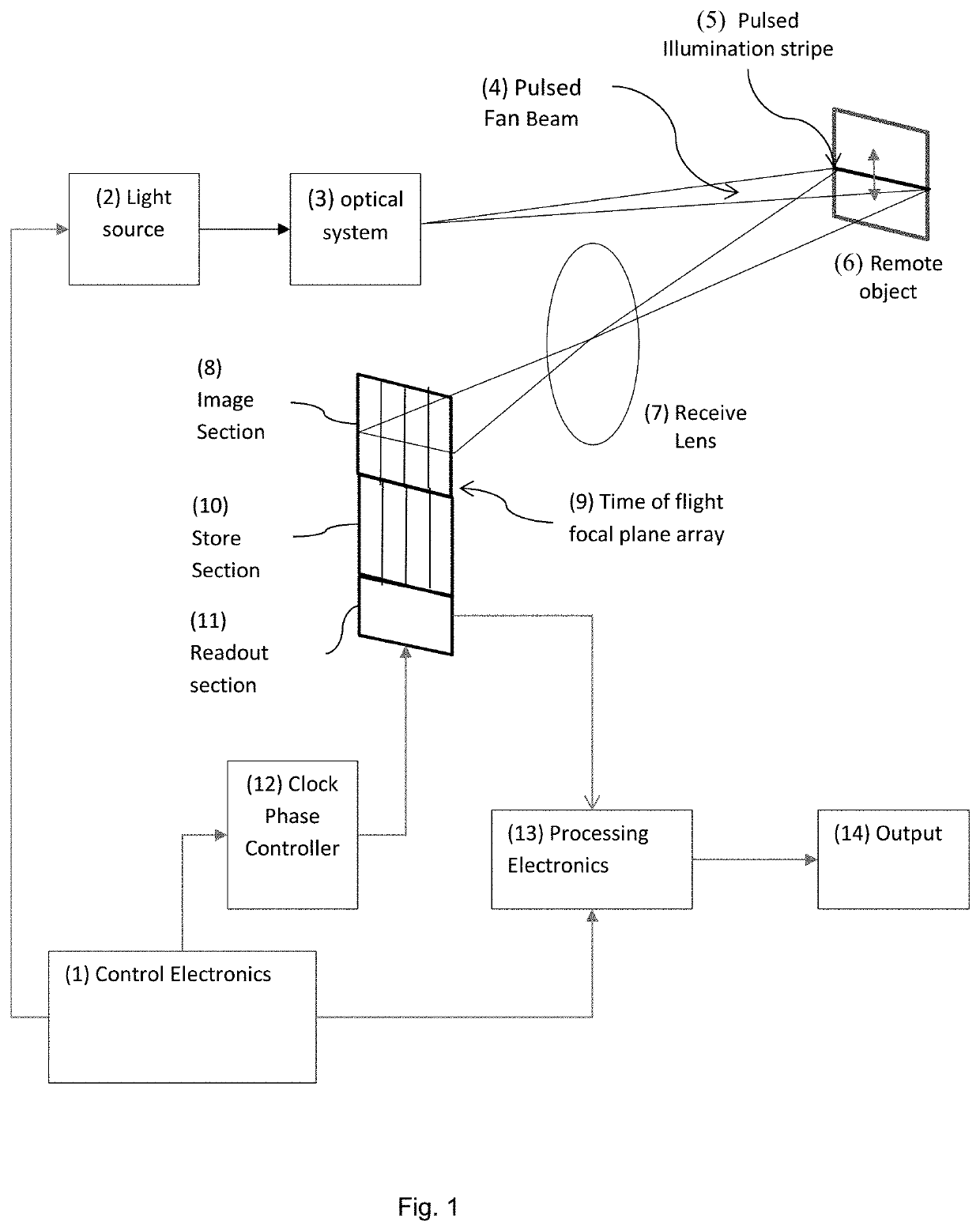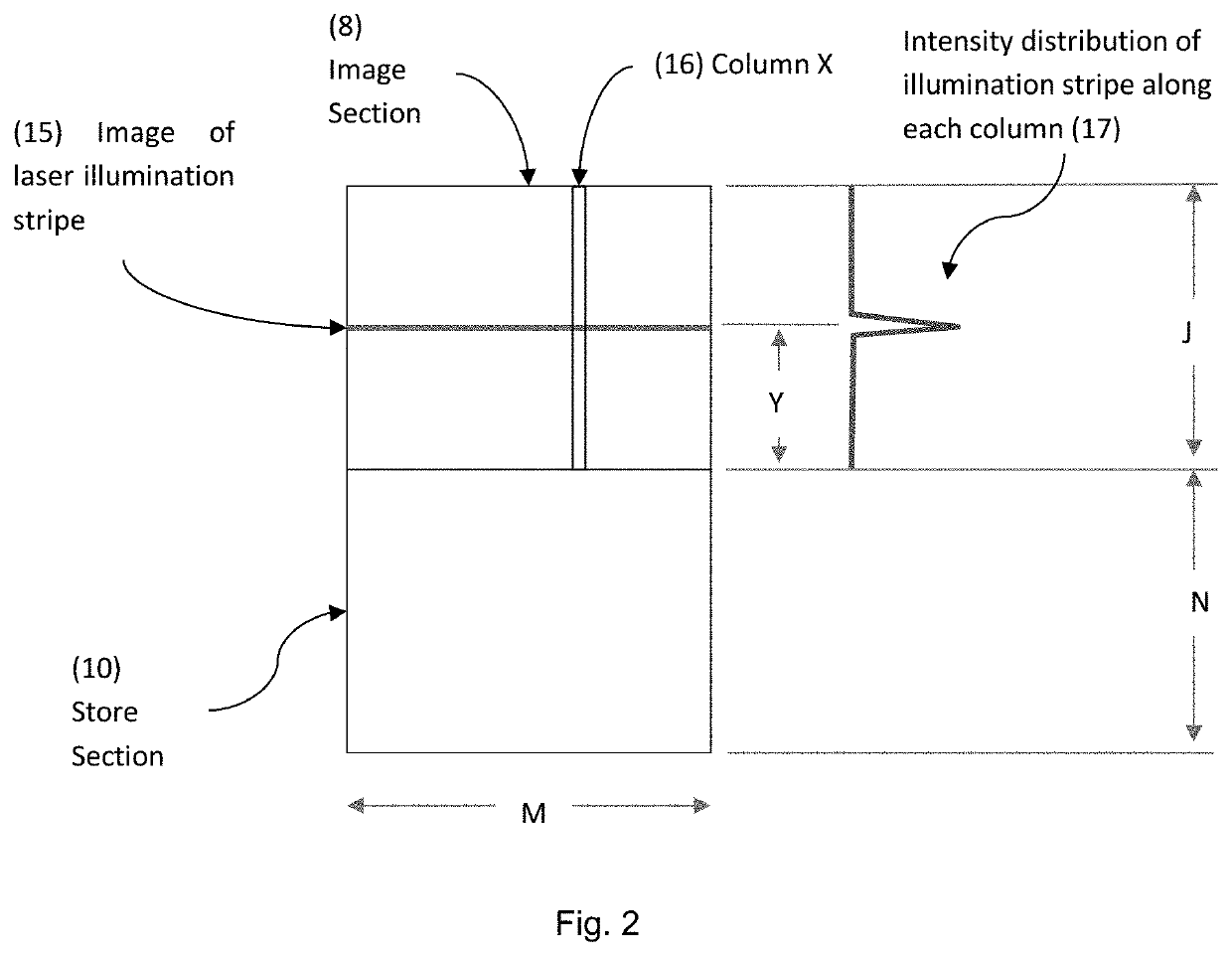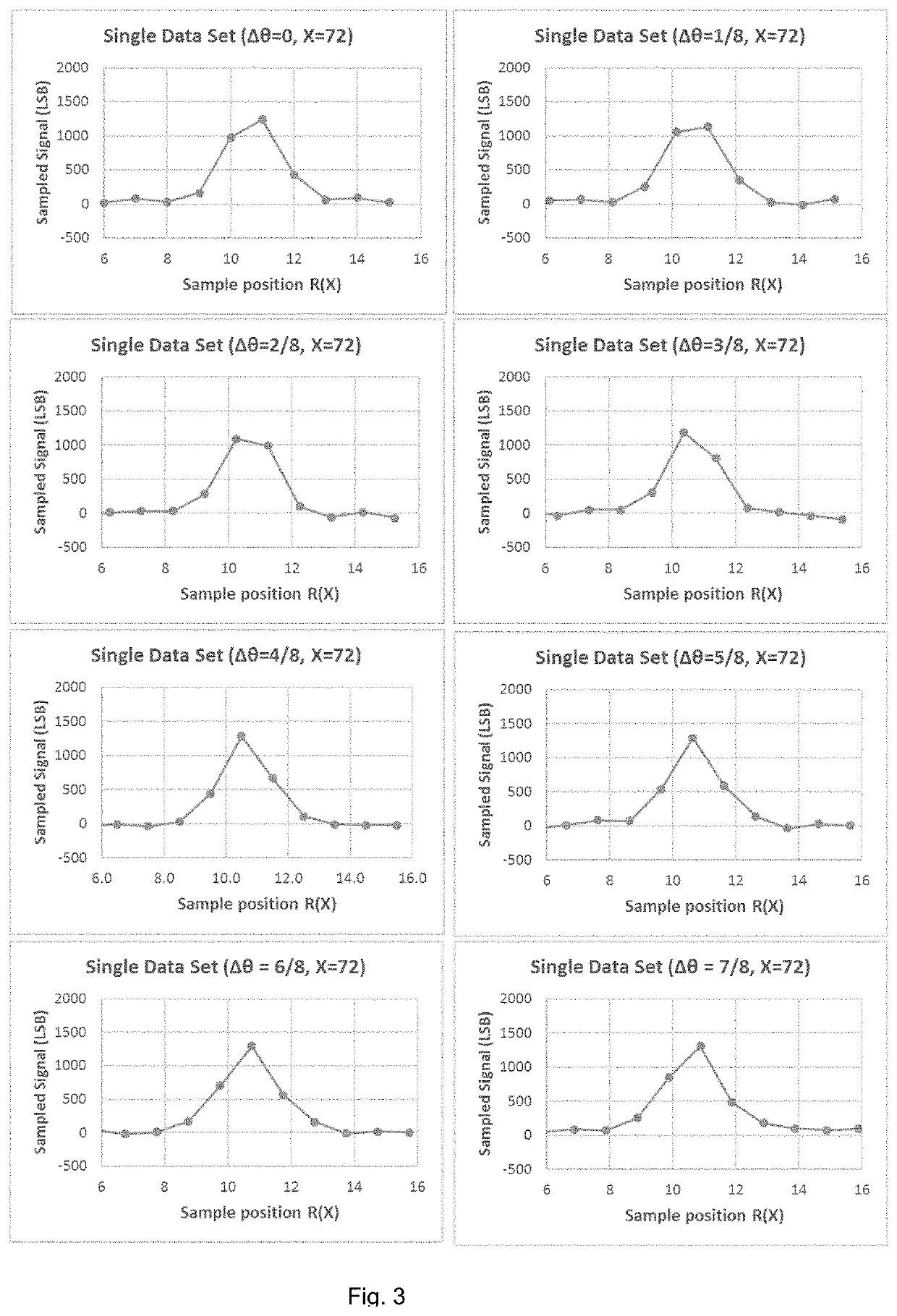Time of flight sensor
- Summary
- Abstract
- Description
- Claims
- Application Information
AI Technical Summary
Benefits of technology
Problems solved by technology
Method used
Image
Examples
Embodiment Construction
[0054]One embodiment is shown in FIG. 1.
[0055]Control electronics (1) are configured to control light source (2) and associated optical system (3) to emit a pattern of light with a pre-defined combination of spatial and temporal characteristics into the far field.
[0056]In the simplest embodiment shown in FIG. 1, the spatial distribution of the emitted light is a fan beam (4) whose location in a direction orthogonal to the long axis of the beam is adjustable under control of the control electronics (1) and the temporal characteristics of the light are a short pulse, where the timing of the light pulse is set by the control electronics (1).
[0057]This combination of spatial and temporal characteristics will create a pulsed stripe of illumination (5) across the surface of any remote object (6).
[0058]Receive lens (7) is configured to collect and focus the reflected pulse of light from this stripe of illumination (5) onto the photosensitive image section (8) of a focal plane array (FPA) d...
PUM
 Login to View More
Login to View More Abstract
Description
Claims
Application Information
 Login to View More
Login to View More - R&D
- Intellectual Property
- Life Sciences
- Materials
- Tech Scout
- Unparalleled Data Quality
- Higher Quality Content
- 60% Fewer Hallucinations
Browse by: Latest US Patents, China's latest patents, Technical Efficacy Thesaurus, Application Domain, Technology Topic, Popular Technical Reports.
© 2025 PatSnap. All rights reserved.Legal|Privacy policy|Modern Slavery Act Transparency Statement|Sitemap|About US| Contact US: help@patsnap.com



